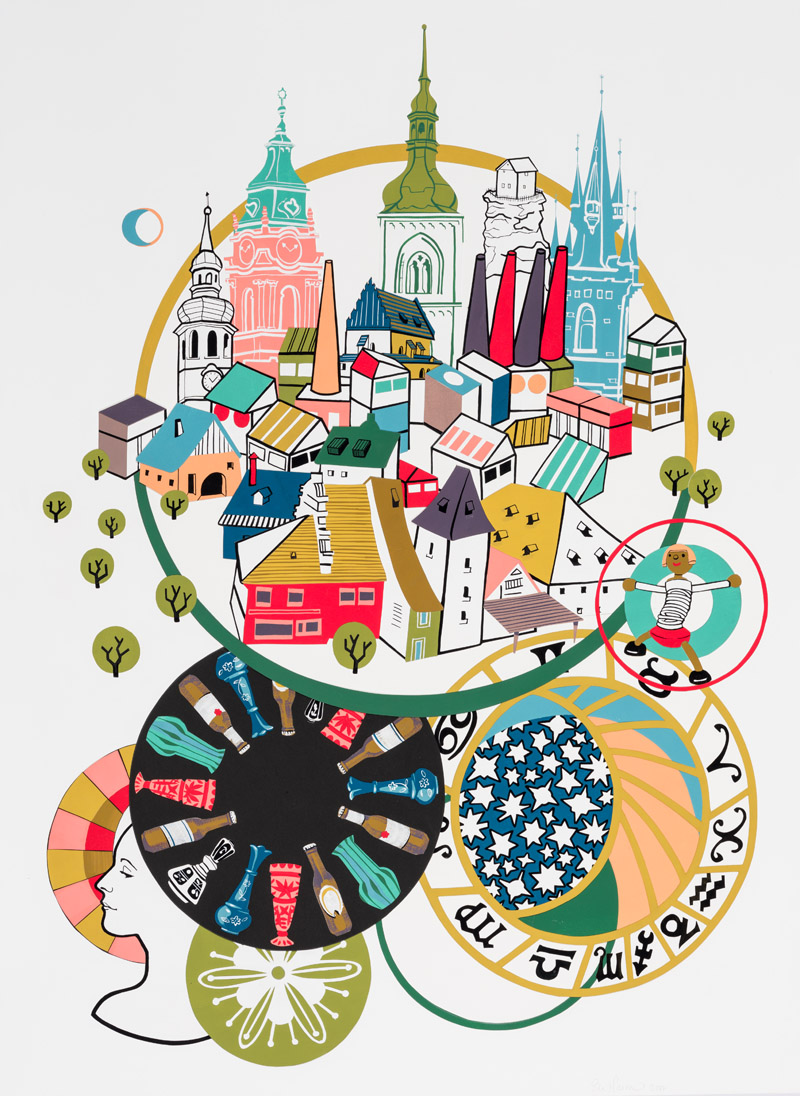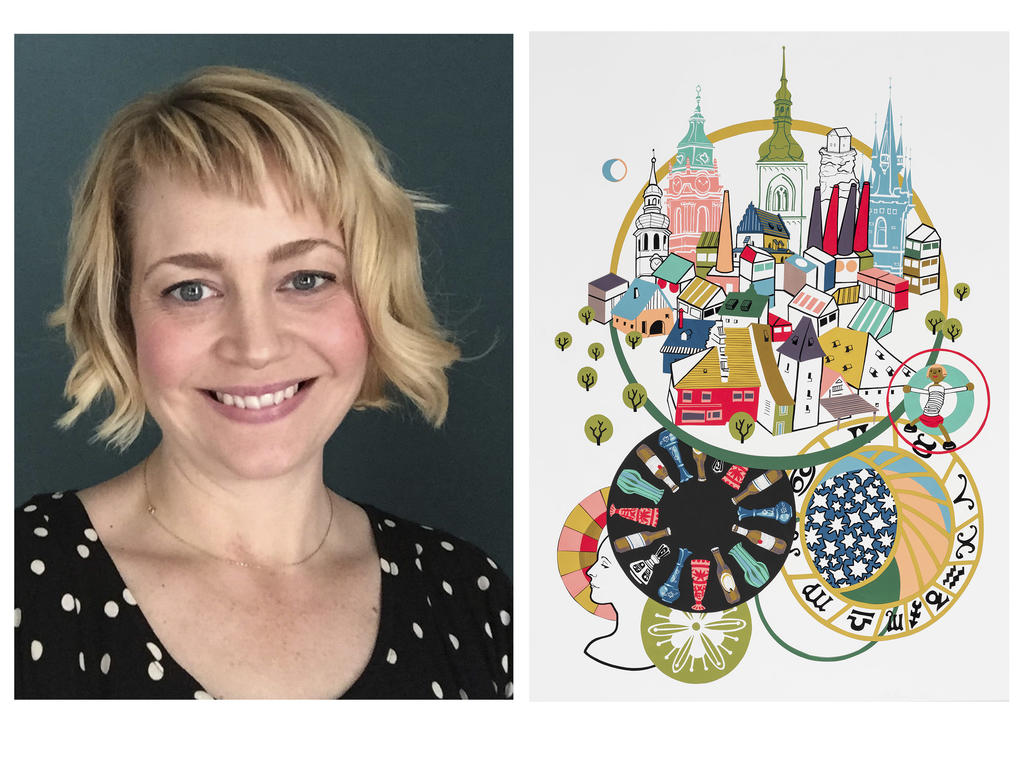The Memphis in May International Festival is recognized as one of the leading festivals held in the U.S. Lasting throughout the month of May, the festival’s signature events include the Beale Street Music Festival, World Championship Barbecue Cooking Contest, and Great American River Run. In addition, the festival honors the culture and history of a chosen country with events featuring artists, speakers, celebrities, and dignitaries from the honored country, opening doors for international commerce and exchange. This year’s international salute goes to the Czech Republic.
In a tradition that dates back to 1980, Memphis in May produces a fine art poster to commemorate the honored country. This year’s poster, which was unveiled Jan. 23 during a ceremony at the Memphis Brooks Museum of Art, was designed by Erin Harmon, associate professor of art and art history at Rhodes College. The posters will be used at events throughout the city, including a special exhibit at the National Civil Rights Museum, and will be distributed to embassies around the world.
Harmon joins a notable list of Mid-South artists who have created poster designs for Memphis in May, including Burton Callicott, Carroll Cloar, George Hunt, Mary Simms, and Nancy Cheairs. “I am honored to be a part of the Memphis in May International poster series,” says Harmon. “It’s really meaningful that the Memphis in May organization commissions local artists each year in celebration of different cultures, and so many of our city’s outstanding artists have produced original artwork over the years. I am excited to be included in such an esteemed cohort.”
Examples of Harmon’s art are currently on display in Rhodes' Catherine Burrow Refectory as part of the college's Student, Faculty, and Alumnae Showcase.

Artist’s Statement on the Design for the Memphis in May International Festival Poster
Every element of this poster pays homage to some aspect of Czech visual culture including art, architecture, and various aspects of design. Researching this project was such a joy I found it difficult to narrow down my inspirations to a single image. I hope the resultant design feels jubilant and dynamic, illustrating my enthusiasm for Czech culture and my optimism for the future of the country. This tone is also served by the use of painted paper collage to construct the original image.
The composition consists of a group of overlapping and interconnected circles alluding to the curvaceous qualities of art nouveau, a defining aesthetic throughout much of the Czech Republic. This interconnectedness is also meant to allude to the unity of the Republic. The palette of the poster was pulled from the vibrant and rich colors found in many stunning stained glass windows throughout the country.
Working from bottom left corner, counter clockwise:
The feminine profile at the bottom left hand corner, is my humble homage to Czech artist Alphonse Mucha’s paintings and posters which often featured a heavily outlined female profile. This particular portrait is my own rendering of Czech soprano and actress Jarmila Novotna, star of the Metropolitan Opera. The entirety of the composition seems to emanate from her head, as if the product of her dreaming.
The pink and gold halo around the front of her profile is taken from the brightly colored arches on the façade of the Jubilee Synagogue in Prague.
The green circle below depicts a Tilia Cordata blossom, otherwise known as the Small-leaved Lime or Small-leaved Linden which is the Czech national tree.
The black wheel formation alternates symbols of bohemian art glass and beer bottles, both famous Czech products.
The large circle to the far right of the poster is my interpretation of the face of Prague’s medieval astronomical clock.
Over-layed at the top of the astronomical dial is a wink to the brilliant toy designer Libuse Niklova. An important innovator of plastic toys, Niklova’s designs are economical, elegant and humorous and were an essential influence on the attitude of this poster. Here I have depicted one of her toys as the Czech Vitruvian Man.
Finally, the largest circle contains a collection of buildings, toy blocks, and spires (for which the country is so famous) piled in an exuberant stack of line drawing and color blocking. This pile was influenced by the landscape paintings and drawings of the great Czech artist Egon Schiele. Schiele of course worked from observation but my pile is a playful abstraction that combines my interpretation of actual buildings and architectural details with toy blocks by graphic designer Ladislav Sutnar (in the center of the circle). At the bottom of the circle are buildings found along the riverfront of Cesky Krumlov. At the top (right to left) you’ll find (either in their entirety or parts of) Our Lady Before Tyn (Prague), The Rock Castle (Sloupe), Tepla Monastary (Tepla), The Altneuschul (Prague), San Nicolas Cathedral (Prague), and the Strahov Monastary (Prague). The top half of the circle acts as a rainbow form unifying these structures into a cohesive space.
